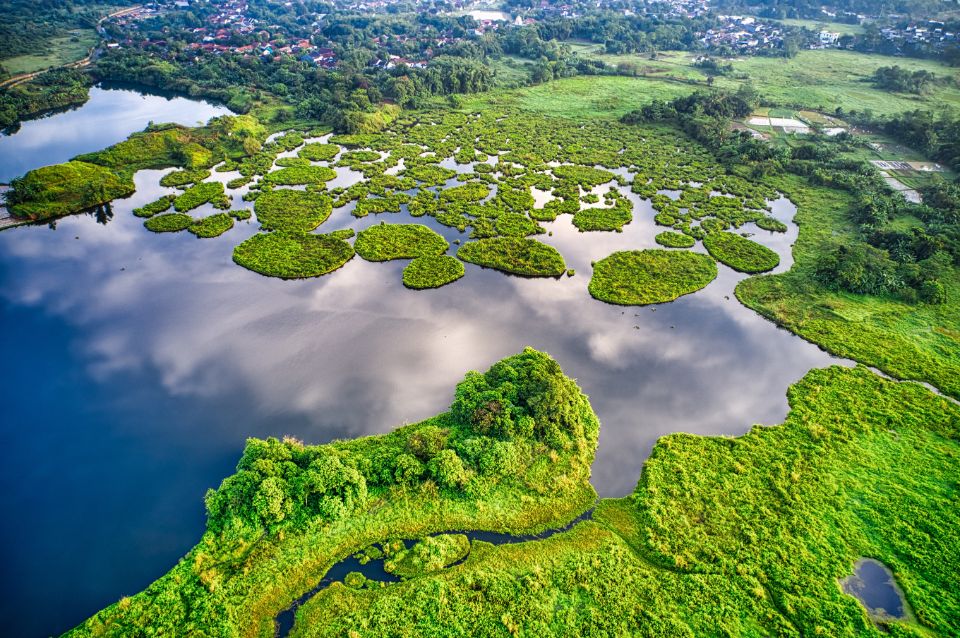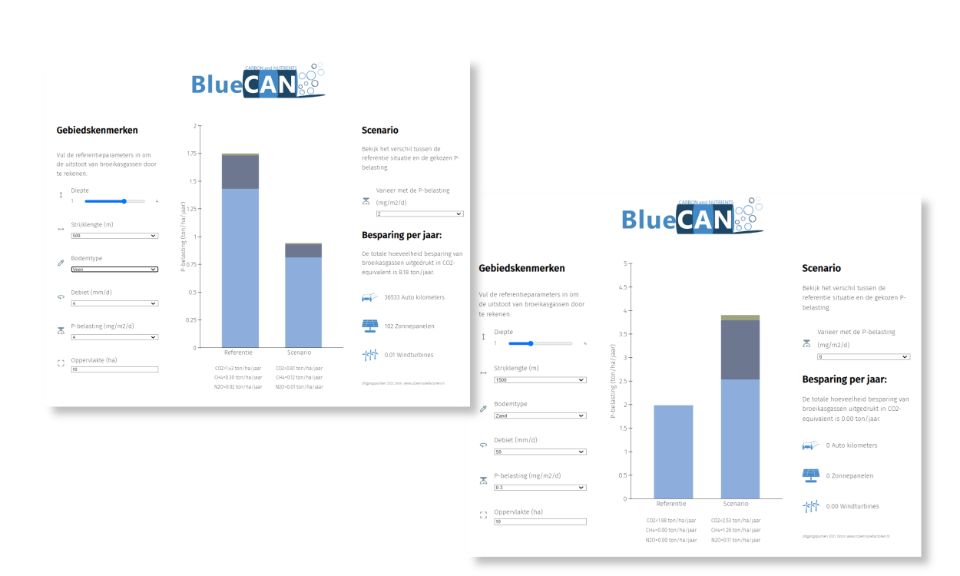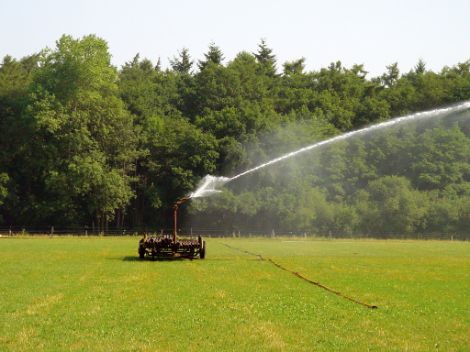BlueCAN Tool
Fresh surface water produces about 5 % of greenhouse gas emissions in the Netherlands. Water managers can use the BlueCAN Tool to determine how much greenhouse gas is emitted by individual ponds and lakes. This will enable them to identify the ‘hotspots’ in the bodies of water under their management. This knowledge provides a sound starting point for improving water quality to help reduce greenhouse gas emissions.
Use the BlueCan Tool here
BlueCAN Tool
The BlueCAN research project, an initiative of Witteveen+Bos and Deltares, has already revealed that bodies of surface water are responsible for significant greenhouse gas emissions. Until now, however, there has not been a quick and cost-efficient way to determine the emissions for an individual body of water. To remedy this, the new BlueCAN Tool has been developed. After filling in a number of parameters, such as water depth and soil type, the BlueCAN Tool generates the expected average annual greenhouse gas emissions, broken down into methane (CH4) and carbon dioxide (CO2).
.png)
Tailor-made for Dutch water systems
The BlueCAN Tool is based on two water-quality models that mathematically calculate the process of greenhouse gas formation in soil and water. These models are complex. The adsorption and emission of greenhouse gases is influenced by numerous factors. These include temperature, sunlight, plant and algae growth, type of substrate, soil bacteria and the thickness and composition of any silt layer. The BlueCAN Tool has been developed specifically for and tailored to the situation in the Netherlands, in part by processing results from Dutch field and laboratory measurements as a basis for validation.

Try the tool yourself!
The BlueCAN Tool is very easy to use. All you need to do to calculate an estimate of greenhouse gas emissions is to fill in a number of characteristics. These can include the depth and size of the individual body of water, the main soil type (peat, sand or clay), the annual phosphorus load (expressed in external P-load and driver of water nutrient richness). Based on the values entered, the BlueCAN Tool calculates an expected average annual greenhouse gas emissions. The result is broken down into methane and carbon dioxide. Want to try it out? Just click on the button below!
BlueCAN Tool is developed by Witteveen+Bos and Deltares in collaboration with B-Ware, Delfland, HDSR, HHNK, Natuurmonumenten, Rijnland, STOWA, Waternet, Wetterskip Fryslân and WDODelta.

Benefits of the BlueCAN Tool

Insight into emission of individual bodies of water
Quickly and cost-consciously determining greenhouse gas emissions for an individual water was not possible until now. With BlueCAN Tool, water managers can get a grip on emissions for each individual surface water.

Easy to use and online accessible
Once the characteristics of a pond or lake have been entered, the BlueCAN Tool provides immediate insight into the expected annual greenhouse gas emissions, broken down into methane and carbon dioxide.

Sound starting point for reducing greenhouse gas emissions
The BlueCAN Tool can determine the largest sources of greenhouse gas emissions for each body of water under management. Knowledge of the hotspots is a sound starting point for taking measures to improve the water quality in these bodies and therefore reduce emissions.

Want to know more?

Bob has studied water quality, modeling, water management, data analysis and environmental science.



